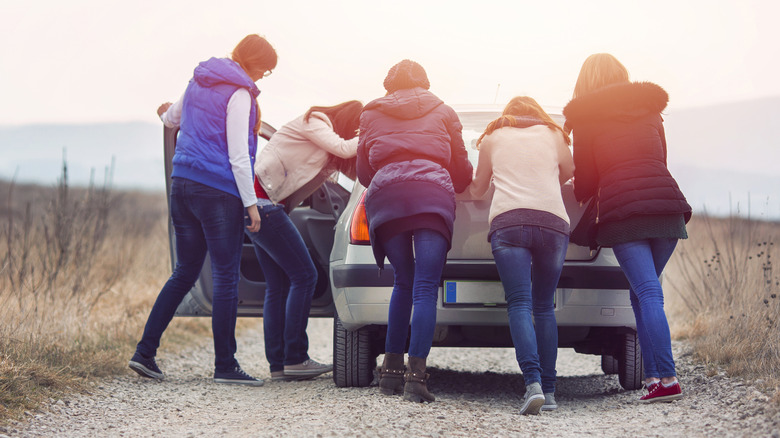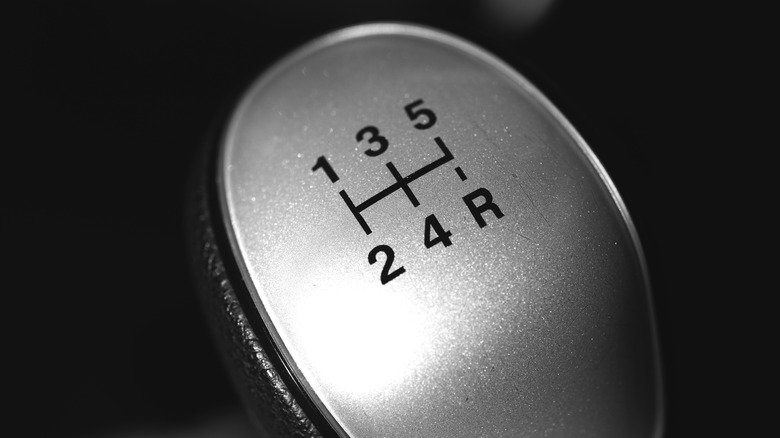Bump-Starting A Vehicle Explained, And How To Do It
Both newbies and experienced drivers should know the basics of bump-starting or push-starting a car. If you have a vehicle with a manual transmission and a weak or dead battery, it's possible to start the engine and get moving again by bump-starting the car. Commonly referred to as clutch starting, roll starting, or push starting, the process involves using the vehicle's momentum to turn the engine.
You could think of it as the hand-operated crank starters of vintage cars. But instead of forcefully turning a crank (and praying to the high heavens that you don't break your fingers or limbs while doing so), bump-starting requires moving or pushing the vehicle and reaching an appropriate speed before releasing the clutch, effectively turning the engine to kickstart the combustion process.
However, there are essential things to consider before bump-starting a car. For starters, you should never push start an automatic car. Bump-starting requires a clutch with manually selectable gears to "awaken" the engine. Vehicles with an automatic or semi-automatic transmission can only select gears when the gearbox and motor are running.
How to bump-start a car
It's best to bump-start a car at the top of a hill or slope and use the downward gradient to build momentum. Then again, having a friend (or two) to push the vehicle could also work.
1. Plan your moves. If going downhill, ensure no obstacles or vehicles are in your way. But when pushing the car on level ground, it's best to find an open or isolated spot away from moving vehicles or busy thoroughfares. There are times when you'll need more than a single attempt to start the engine by push-starting, and you don't want to impede traffic while doing so.
2. Turn the ignition switch ON, press the clutch pedal, and move the shifter to either first or second gear. If there's not a lot of room to push the car, use first gear. Otherwise, use second gear, especially when bump-starting a vehicle on a downhill slope. Keep the clutch pedal depressed.
3. The final step is to move the vehicle by pushing or garnering momentum downhill (until reaching a speed of about 6 mph or 10 kph) and releasing the clutch. After the engine starts, press the clutch pedal again and engage the neutral gear, or keep driving.
Remember that bump-starting is an emergency maneuver. It should not be done repeatedly due to practical and safety reasons. After jump-starting your car, it's best to drive to a garage or repair shop to replace the battery. For vehicles with automatic transmissions, jump-starting using a donor car is a better option.

